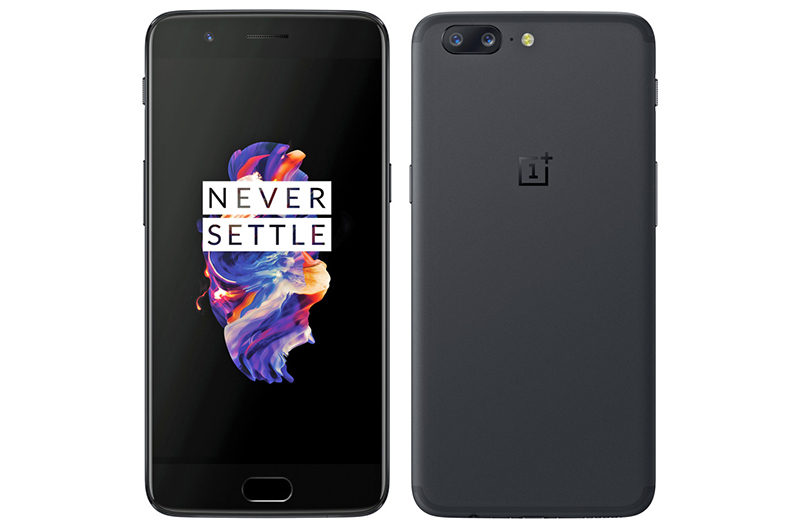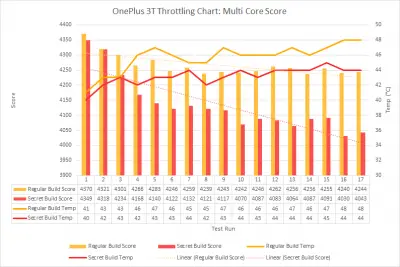
There’s nothing really special about this setup – the cheaper Xiaomi Mi 9 also has the same 48MP Sony IMX 586 sensor, a telephoto lens, and a wide-angle lens – but there are plenty of smartphones out there without a telephoto and wide-angle lens. OnePlus has finally brought zoom back to its smartphones, and they’ve also gotten on board with the awesome wide-angle lens trend.
#ONEPLUS BENCHMARKS DELETED FROM GEEKBENCH CHEATING PRO#
The OnePlus 7 Pro has a triple rear camera setup consisting of a primary 48MP, f/1.6, 1.6μm sensor, a secondary 8MP, f/2.4, 1.0μm telephoto sensor for 3x optical zoom, and a tertiary 16MP, f/2.2 117° wide-angle lens.

This year, OnePlus has made a huge leap in the camera hardware they’re offering in their devices. Suffice it to say, OnePlus hasn’t been on par with other brands when it comes to photography, especially when we’re talking about the likes of Google and Huawei. Then there’s the OnePlus 5, which before the new OnePlus 7 Pro was the last smartphone from OnePlus to have a telephoto lens. The OnePlus 5T before that used its 20MP secondary camera to take better pictures in low-light conditions, but that didn’t turn out so well. Both the OnePlus 6 and OnePlus 6T have a dual rear camera setup consisting of a 16MP, f/1.7, 1.22μm sensor and a 20MP, f/1.7, 1.0μm sensor for depth detection in portrait mode. While other brands substantially improved the camera quality in their smartphones with each generation, OnePlus has traditionally lagged behind in upgrading the cameras of their smartphones. However, stressing the CPU while the phone is charging can result in pretty substantial thermal throttling as the phone has to balance performance with keeping the battery temperature under control. When the phone isn’t charging, there’s hardly any thermal throttling for the first 15 minutes of the test.


On the right, I ran the same test for the same length of time while the phone was charging with the Warp Charge 30 charger. On the left, I ran the throttling test for 15 minutes while the phone was unplugged. The app charts the score over time so you can see when the phone starts throttling. This app repeats a simple multithreaded test in C for as short as 15 minutes. I used a fairly obscure app called “CPU Throttling Test” to test the performance. Let’s start with the sustained CPU performance test. Thus, I decided to test the OnePlus 7 Pro’s sustained performance. Rarely do we perform resource-intensive tasks in short bursts, especially for gaming. The sustained performance of a device is incredibly important, too. OnePlus boasts a “10-layer liquid cooling system” on the OnePlus 7 Pro, so it’s possible it outperforms the reference device in sustained performance but not peak performance.Ĭompanies love to tout the performance of their devices, but when they do so they’re usually only talking about the peak performance. I only played around with the Qualcomm reference device for 2 hours back in January, so sadly I couldn’t perform the entire suite of GFXbench tests, nor could I do any tests to examine thermal throttling. The OnePlus 7 Pro and Qualcomm Snapdragon 855 reference device performed nearly identically in the few GFXbench tests that I managed to run on both devices. Few games on the Play Store support anything higher than FHD, so you’re unlikely to run into any issues there anyway. This is totally unsurprising, but something you should keep in mind when you’re playing a game. Specifically, the GPU has to render about 80% more pixels on the screen. The phone has to work much harder to handle the on-screen rendering tests when the benchmark scenes render at QHD+ resolution rather than FHD+ resolution. On the other hand, there’s a pretty substantial difference in performance for the on-screen tests. After all, there’s nothing being rendered on the screen so all the load is happening on the GPU without taking the display into consideration.

Predictably, there’s no change in scores for the offscreen tests.


 0 kommentar(er)
0 kommentar(er)
